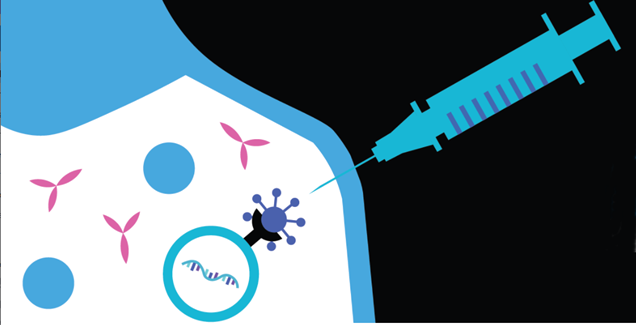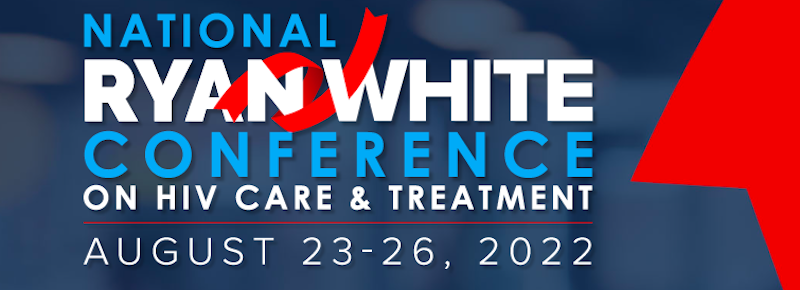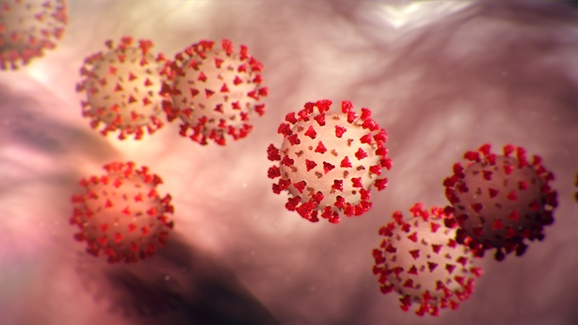Inside This Issue: Federal Implementation Plan for National HIV/AIDS Strategy; CDC endorses the first updated COVID-19 vaccine boosters; new international alliance for ending AIDS in children by 2030; update to HIV treatment guidelines, and more.
.png)
U.S. HIV Epidemic Response
Federal Plan Presents Action Items for Implementing National HIV/AIDS Strategy
Late last month, the White House published the National HIV/AIDS Strategy [NHAS] Federal Implementation Plan for the United States: 2022-2025 (Implementation Plan). The document describes more than 380 action items that 10 federal departments will implement individually and collaboratively to meet the targets of the NHAS, which calls for a 75% reduction in new HIV infections by 2025 and a 90% reduction by 2030. To meet these and other targets, NHAS established specific objectives and indicators to track progress toward its four overarching goals: preventing new HIV infections; improving HIV-related health outcomes of people with HIV; reducing HIV-related disparities and health inequities; and achieving integrated, coordinated efforts that address the HIV epidemic among all partners and stakeholders.
In addition to the original NHAS indicators that focus primarily on steps in the HIV care continuum and HIV prevention, the Implementation Plan now includes five additional indicators that focus on the quality of life of people with HIV. “These new measures will expand our focus beyond just clinical measures for people with HIV,” noted Harold Phillips, director of the White House Office of National AIDS Policy. “The indicators address self-rated health, unmet need for mental health services, hunger/food insecurity, unemployment, and unstable housing or homelessness.”
In particular, the new indicators are associated with the following targets:
- increasing the proportion of people with diagnosed HIV who report good or better health to 95% from a 2018 baseline of 71.5%;
- decreasing by half (from a 2017 baseline of 24.2%) the proportion of people with diagnosed HIV who report an unmet need for services from a mental health professional;
- decreasing by half (from a 2017 baseline of 21.1%) the proportion of people with diagnosed HIV who report ever being hungry and not eating because there wasn’t enough money for food;
- decreasing by half (from a 2017 baseline of 14.9%) the proportion of people with diagnosed HIV who report being out of work; and
- decreasing by half (from a 2018 baseline of 21.0%) the proportion of people with diagnosed HIV who report being unstably housed or homeless.
The Implementation Plan notes that the federal government “is only one component of the broad effort needed to evolve and enhance our work to end the domestic HIV epidemic. That is why the Strategy is a national one, not just a federal one. Contributions from stakeholders from all sectors of society are needed. Fresh approaches, new partnerships, and shared commitments to equity, better coordination, and following the science will help us move forward.”
HRSA Awards Over $20 Million to Health Centers in Support of EHE Initiative
The Health Resources and Services Administration (HRSA) recently awarded about $20.6 million to 64 health centers in 20 states to increase HIV prevention, testing, and treatment services. Recipient health centers will use this funding to expand access to pre-exposure prophylaxis (PrEP) and related services, to connect people with care, and to ensure that HIV care services are coordinated well. This investment is part of the Ending the HIV Epidemic (EHE) initiative, which has the goal of reducing the number of new U.S. HIV infections 90% by 2030. A list of the award recipients, their locations, and funding amounts is available on the HRSA website.
“We have the tools to end the HIV epidemic in the U.S., including testing and medication to prevent and treat HIV. Yet, tools alone won’t end the epidemic – we need to support trusted community leaders in their work to engage people in care,” noted HRSA Administrator Carole Johnson. The awards “make these critical investments by building on HRSA’s longstanding support for the Ryan White HIV/AIDS Program to expand our HIV prevention and treatment work in community health centers.”

COVID-19 Vaccines
CDC Endorses the First Updated COVID-19 Vaccine Boosters
On September 1, CDC Director Dr. Rochelle Walensky endorsed the CDC Advisory Committee on Immunization Practices’ (ACIP) recommendations for use of updated COVID-19 boosters from Pfizer-BioNTech for people ages 12 years and older and from Moderna for people ages 18 years and older. Both of these updated COVID-19 boosters add Omicron BA.4 and BA.5 spike protein components to the current vaccine composition.
The CDC recommendation followed a U.S. Food and Drug Administration (FDA) decision the previous day to authorize bivalent formulations of the Moderna COVID-19 Vaccine and the Pfizer-BioNTech COVID-19 Vaccine as a single booster dose at least two months following primary or booster vaccination. The bivalent vaccines contain two messenger RNA components of SARS-CoV-2 – the virus responsible for COVID-19: one of the original strains of SARS-CoV-2 and the other one in common between the BA.4 and BA.5 lineages of the omicron variant of SARS-CoV-2.
“The updated COVID-19 boosters are formulated to better protect against the most recently circulating COVID-19 variant,” noted Dr. Walensky. “They can help restore protection that has waned since previous vaccination and were designed to provide broader protection against newer variants. This recommendation followed a comprehensive scientific evaluation and robust scientific discussion. If you are eligible, there is no bad time to get your COVID-19 booster and I strongly encourage you to receive it.” In the weeks ahead, CDC also expects to recommend the updated COVID-19 boosters for other pediatric groups, taking into consideration the evaluation and discussion of available data by the ACIP.
%20small.jpg)
The Global HIV Epidemic
New International Alliance for Ending AIDS in Children by 2030
Although an estimated three-quarters (76%) of all adults with HIV worldwide are receiving antiretroviral treatment (ART), the proportion of children with HIV on ART is substantially less – only 52%, according to the latest data from UNAIDS. To address this important disparity in treatment access, UNAIDS, the United Nations Children’s Fund (UNICEF), and the World Health Organization (WHO) have brought together a new Global Alliance for Ending AIDS in Children by 2030 (Alliance). The Alliance includes: civil society movements, including the Global Network of People living with HIV; national governments in heavily affected countries; and international partners, including the U.S. President’s Emergency Plan for AIDS Relief (PEPFAR), and The Global Fund to Fight AIDS, Tuberculosis, and Malaria.
Alliance members have identified the following “four pillars for collective action”:
- closing the treatment gap for pregnant and breastfeeding adolescent girls and women living with HIV, and optimizing continuity of treatment;
- preventing and detecting new HIV infections among pregnant and breastfeeding adolescent girls and women;
- accessible testing, optimized treatment, and comprehensive care for infants, children, and adolescents exposed to and living with HIV; and
- addressing rights, gender equality, and the social and structural barriers that hinder access to services.
“The wide gap in treatment coverage between children and adults is an outrage,” noted UNAIDS Executive Director Winnie Byanyima. “Through this Alliance, we will channel that outrage into action. By bringing together new improved medicines, new political commitment, and the determined activism of communities, we can be the generation who end AIDS in children.”
%202%20-%20small.jpeg)
HIV Guidelines
HHS Updates HIV Treatment Guidelines for Adults and Adolescents
A U.S. Department of Health and Human Services (HHS) HIV expert panel has just updated its Guidelines for the Use of Antiretroviral Agents in Adults and Adolescents with HIV. In particular, the panel has incorporated new guidance into its drug-drug interactions tables (Tables 24a-f) concerning potential interactions between antiretroviral drugs and antiviral drugs (brincidofovir, cidofovir, or tecovirimat) that are currently being used to treat the monkeypox virus. The tables include information about the potential effects of co-administering the drugs on their concentrations, as well as dosage recommendations and other clinical guidance.

Conference News
Recap: 2022 National Ryan White Conference on HIV Care and Treatment
The 2022 National Ryan White Conference on HIV Care and Treatment (2022 NRWC) was held virtually from August 23 through 26. The theme for 2022 was: “The Time Is Now: Harnessing the Power of Innovation, Health Equity, and Community to End the HIV Epidemic.” According to the conference organizers, this theme reflects the urgency for ending the U.S. HIV epidemic, also highlighting the tools and resources that are needed to reach this goal. “HRSA’s Ryan White HIV/AIDS Program [RWHAP] understands we must continue to promote health equity to reduce HIV-related health disparities; be innovative in how we deliver HIV care and treatment; support people with HIV; and ensure people with HIV and their communities are involved in the planning, development, and implementation of HIV care and treatment strategies.”
The four-day virtual event featured more than 160 workshops organized under the following six tracks:
- Population-Based Approaches for Improving Access, Engagement/Reengagement, and Health Outcomes;
- Data Utilization;
- Innovative System-Level Models for HIV Service Delivery;
- Clinical Quality Management;
- RWHAP Planning and Resource Allocation: Community Engagement and Collaborative Partnerships; and
- RWHAP Fiscal and Grant Management Boot Camp.
There were also 87 poster sessions, 5 business meetings, and 4 plenaries focusing on the U.S. federal approach to ending the HIV epidemic, health equity, community engagement, and innovation. Additional information is available in the 2022 NRWC Program Book, and in a series of HIV.gov blog posts covering the highlights of Day 1, Day 2, Day 3, and Day 4 of the conference.
%20small.jpg)
Educational Resources
Community Engagement, Criminalization, and Harm Reduction Resources from NASTAD
The National Alliance of State and Territorial AIDS Directors (NASTAD) has posted several new and updated resources on its website. These include:
Re-envisioning Community Engagement: A Practical Toolkit to Empower HIV Prevention Efforts with Marginalized Communities – This 50-page resource provides an overview of community engagement in public health and HIV prevention, as well as sections on eight principles for community engagement; engaging communities for planning and implementing plans as part of the Ending the HIV Epidemic (EHE) initiative; and practical examples of activities organizations can do within the scope of EHE work.
HIV Criminalization Resources – This directory includes descriptions and links to general resources on HIV criminalization; publications and policy statements; data privacy, confidentiality, and ethics; and educational tools, guidelines, and talking points.
Harm Reduction Hacks: A Syringe Services Program (SSP) Provider Basic Operations Handbook – According to NASTAD, “Harm Reduction Hacks is the product of a series of 38 qualitative conversations with harm reduction leaders representing every region of the U.S. that took place in the Fall of 2020 and the Spring of 2021.” It includes tips on leadership, organizational design and planning, community relations, advocacy, legal and fiscal structure, fundraising, workforce development, and other topics.
2022 Hepatitis Drug Guide Now Available from TPAN
The Test Positive Aware Network (TPAN) recently published its annual Hepatitis Drug Guide. At the core of the guide are two tables listing drugs for the treatment of hepatitis B (HBV) and hepatitis C (HCV) infection that have been approved by the FDA. The HBV medications table lists each drug’s medication class; generic and brand names and common abbreviations; manufacturer; and whether the drug is considered a preferred regimen in current treatment guidelines. The HCV drug table has similar information plus the HCV genotypes particular drugs treat, and the availability of copay cards, patient assistance programs, and generic versions. The guide also includes several background articles on HBV and HCV, including:
- Hepatitis B – An Overview
- Hepatitis B Medications: Preferred Regimens Based on AASLD treatment Guidelines
- Black Box Warning (Hepatitis B Reactivation)
- Hepatitis B Medication Patient Assistance Programs
- 10 Things to Know about Hepatitis C
- HCV Co-pay and Resources
- Hepatitis C treatment for HIV/HCV Co-infected Persons
- Hepatitis D: Keeping an Eye on a New Viral Infection of the Liver

Other COVID-19 News
Recent COVID-19 Research Reports
CDC’s COVID Data Tracker Weekly Review highlights key data from its COVID Data Tracker, narrative interpretations of the data, and visualizations from the week. Themes of recent Weekly Review issues include staying up-to-date with vaccines; returning to school; and COVID-19 vaccine equity.
The Morbidity and Mortality Weekly Report (MMWR) is also providing continuing coverage of COVID-19-related research. CDC is archiving its MMWR reports on a page devoted to studies about COVID-19. For your convenience, we have compiled below links to recent MMWR papers:



